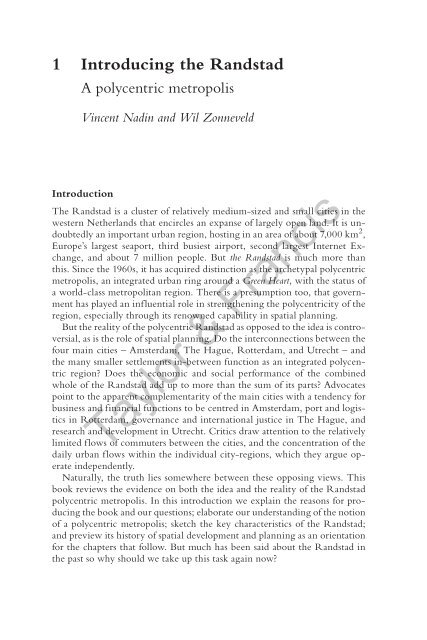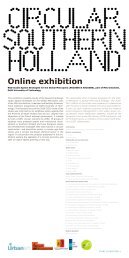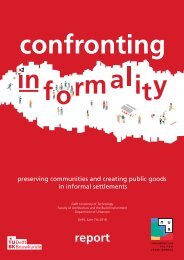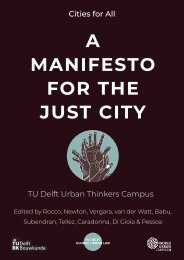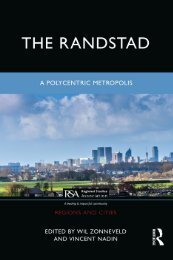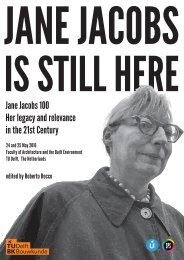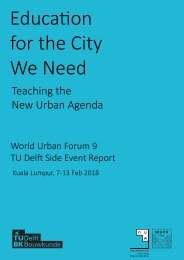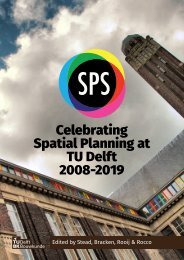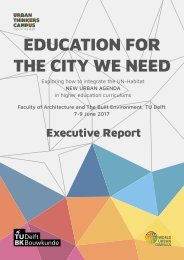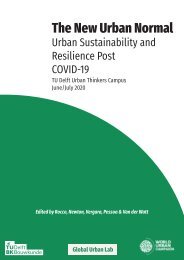The Randstad, a polycentric metropolis, by Vincent Nadin & Will Zonneveld. (Introduction Chapter)
Introduction The Randstad is a cluster of relatively medium-sized and small cities in the western Netherlands that encircles an expanse of largely open land. It is undoubtedly an important urban region, hosting in an area of about 7,000 km2, Europe’s largest seaport, third busiest airport, second largest Internet Exchange, and about 7 million people. But the Randstad is much more than this. Since the 1960s, it has acquired distinction as the archetypal polycentric metropolis, an integrated urban ring around a Green Heart, with the status of a world-class metropolitan region. There is a presumption too, that government has played an inf luential role in strengthening the polycentricity of the region, especially through its renowned capability in spatial planning. But the reality of the polycentric Randstad as opposed to the idea is controversial, as is the role of spatial planning. Do the interconnections between the four main cities – Amsterdam, The Hague, Rotterdam, and Utrecht – and the many smaller settlements in-between function as an integrated polycentric region? Does the economic and social performance of the combined whole of the Randstad add up to more than the sum of its parts? Advocates point to the apparent complementarity of the main cities with a tendency for business and financial functions to be centred in Amsterdam, port and logistics in Rotterdam, governance and international justice in The Hague, and research and development in Utrecht. Critics draw attention to the relatively limited f lows of commuters between the cities, and the concentration of the daily urban f lows within the individual city-regions, which they argue operate independently.
Introduction
The Randstad is a cluster of relatively medium-sized and small cities in the
western Netherlands that encircles an expanse of largely open land. It is undoubtedly
an important urban region, hosting in an area of about 7,000 km2,
Europe’s largest seaport, third busiest airport, second largest Internet Exchange,
and about 7 million people. But the Randstad is much more than
this. Since the 1960s, it has acquired distinction as the archetypal polycentric
metropolis, an integrated urban ring around a Green Heart, with the status of
a world-class metropolitan region. There is a presumption too, that government
has played an inf luential role in strengthening the polycentricity of the
region, especially through its renowned capability in spatial planning.
But the reality of the polycentric Randstad as opposed to the idea is controversial,
as is the role of spatial planning. Do the interconnections between the
four main cities – Amsterdam, The Hague, Rotterdam, and Utrecht – and
the many smaller settlements in-between function as an integrated polycentric
region? Does the economic and social performance of the combined
whole of the Randstad add up to more than the sum of its parts? Advocates
point to the apparent complementarity of the main cities with a tendency for
business and financial functions to be centred in Amsterdam, port and logistics
in Rotterdam, governance and international justice in The Hague, and
research and development in Utrecht. Critics draw attention to the relatively
limited f lows of commuters between the cities, and the concentration of the
daily urban f lows within the individual city-regions, which they argue operate
independently.
You also want an ePaper? Increase the reach of your titles
YUMPU automatically turns print PDFs into web optimized ePapers that Google loves.
1 Introducing the <strong>Randstad</strong><br />
A <strong>polycentric</strong> <strong>metropolis</strong><br />
<strong>Vincent</strong> <strong>Nadin</strong> and Wil <strong>Zonneveld</strong><br />
<strong>Introduction</strong><br />
<strong>The</strong> <strong>Randstad</strong> is a cluster of relatively medium-sized and small cities in the<br />
western Netherlands that encircles an expanse of largely open land. It is undoubtedly<br />
an important urban region, hosting in an area of about 7,000 km 2 ,<br />
Europe’s largest seaport, third busiest airport, second largest Internet Exchange,<br />
and about 7 million people. But the <strong>Randstad</strong> is much more than<br />
this. Since the 1960s, it has acquired distinction as the archetypal <strong>polycentric</strong><br />
<strong>metropolis</strong>, an integrated urban ring around a Green Heart, with the status of<br />
a world-class metropolitan region. <strong>The</strong>re is a presumption too, that government<br />
has played an influential role in strengthening the <strong>polycentric</strong>ity of the<br />
region, especially through its renowned capability in spatial planning.<br />
But the reality of the <strong>polycentric</strong> <strong>Randstad</strong> as opposed to the idea is controversial,<br />
as is the role of spatial planning. Do the interconnections between the<br />
four main cities – Amsterdam, <strong>The</strong> Hague, Rotterdam, and Utrecht – and<br />
the many smaller settlements in-between function as an integrated <strong>polycentric</strong><br />
region? Does the economic and social performance of the combined<br />
whole of the <strong>Randstad</strong> add up to more than the sum of its parts? Advocates<br />
point to the apparent complementarity of the main cities with a tendency for<br />
business and financial functions to be centred in Amsterdam, port and logistics<br />
in Rotterdam, governance and international justice in <strong>The</strong> Hague, and<br />
research and development in Utrecht. Critics draw attention to the relatively<br />
limited flows of commuters between the cities, and the concentration of the<br />
daily urban flows within the individual city-regions, which they argue operate<br />
independently.<br />
Naturally, the truth lies somewhere between these opposing views. This<br />
book reviews the evidence on both the idea and the reality of the <strong>Randstad</strong><br />
<strong>polycentric</strong> <strong>metropolis</strong>. In this introduction we explain the reasons for producing<br />
the book and our questions; elaborate our understanding of the notion<br />
of a <strong>polycentric</strong> <strong>metropolis</strong>; sketch the key characteristics of the <strong>Randstad</strong>;<br />
and preview its history of spatial development and planning as an orientation<br />
for the chapters that follow. But much has been said about the <strong>Randstad</strong> in<br />
the past so why should we take up this task again now?<br />
Taylor & Francis


